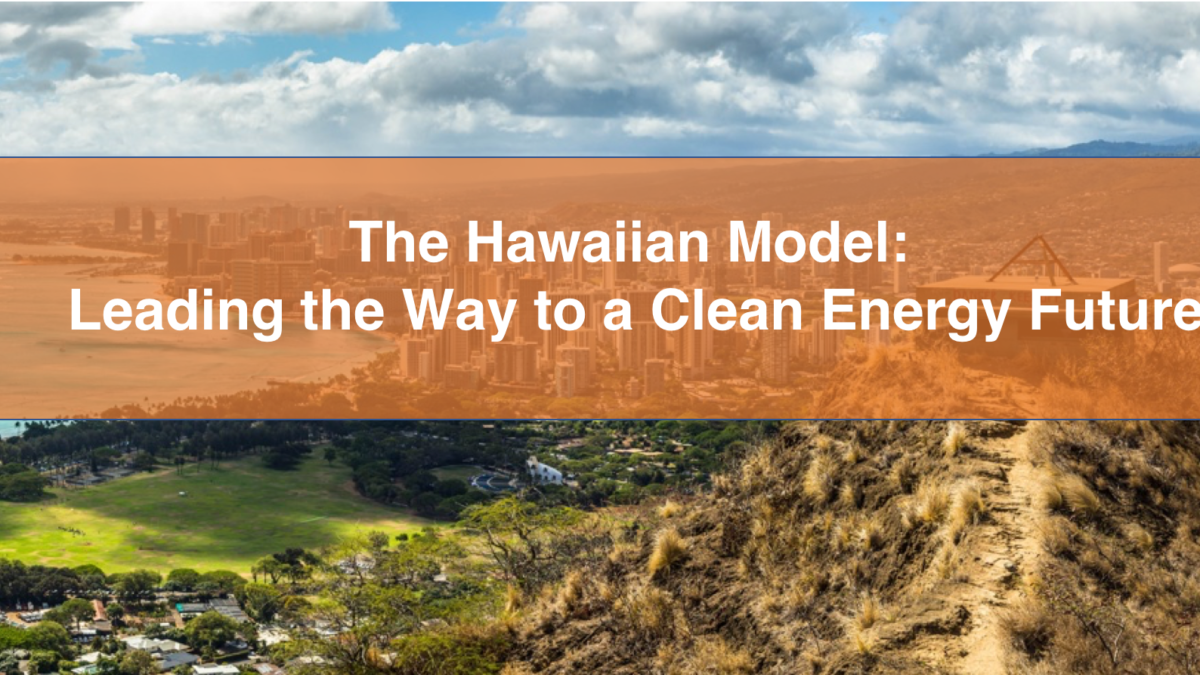
With resiliency planning in the face of increasing natural disasters and pioneering renewable energy and transportation goals, Hawaii is a hot bed of clean technology innovations and public-private partnerships. As we look towards the event that examines all of this – VERGE Hawaii in June – here are the top trends we’re watching where Hawaii is leading the way:
Decarbonizing the grid
Hawaii is steering the clean energy transition in a big way, with a quarter of the state’s electricity now sourced from renewable energy, up from 9 percent in 2010. These actions on the ground are driven by strong policy at the state and local level. Hawaii has pledged to transition to 100 percent renewable energy in the electricity sector by 2045 – the only state in the country with such an ambitious commitment. Hawaii has managed to make progress so far by replacing coal and oil with renewable sources like wind and solar. The state already leads the nation, per capita, in rooftop solar: between 2010 and 2017, Hawaii installed 600 megawatts of rooftop solar capacity.
In order to integrate these rooftop systems and other DERs, energy storage has and will continue to play a huge role in the energy transition to prevent curtailment and bring down energy prices with both public and private investment. Hawaiian Electric Co. currently owns or operates 17 energy storage projects that it will weave into the electric grid across the Hawaiian Islands. Honolulu-based Blue Planet Energy has a different approach: proliferating off-grid energy storage that could help Hawaii weather electricity challenges with a combination of centralized and distributed electric grids. Blue Planet Energy is also taking what it’s learned about deploying cleantech systems in an island environment and applying it to Puerto Rico’s hurricane recovery efforts. Other companies like EnSync Energy are putting Hawaii residents in more direct control of their energy futures with technology innovations that enable autonomous peer-to-peer electricity sharing among a network of homes, which could be particularly useful in Hawaii’s ever-growing multi-unit dwellings.
This year is the 10-year anniversary of the inception of the Hawaii Clean Energy Initiative that was instrumental in establishing the state’s ambitious 100% renewable energy mandate. VERGE Hawaii will be a bit of reunion for the major participants in that initiative, and the conference will look back and reflect forward by exploring data from the last decade across multiple aspects of Hawaiian society.
Electrifying transportation
In December 2017, keeping with their nation-leading clean energy pledge, Hawaii’s four mayors made a joint commitment to take Hawaii’s ground transportation off of fossil fuels. Within 28 years, all cars, trucks, trains, and buses will be fueled by renewable energy in the state, again the only such goal in the United States. This may present more of a challenge to the public and private sector than the renewable electricity goal, as a 100 percent electric fleet is projected to add to grid demand by a third, per a report by Elemental Excelerator, Rhodium Group and Smart Growth America.
Looking clear-eyed at the challenges, transportation and clean energy advocates in the public and private sector are steeled for the task. Nearly six months into the pledge, Hawaiian Electric has already developed a formal roadmap to an all-electric car future, which includes: adding public charging infrastructures, lowering electric vehicle costs for consumers, optimizing daytime vehicle charging and assisting with the electrification of commercial fleets and heavy equipment. FreeWire Technologies, which provides a “mobile” EV charging station, has worked closely with Hawaiian Electric to help test where charging equipment makes the most sense. But electrifying the larger transit system will combine players from land use planning, transportation and the electricity grid that aren’t used to making integrated decisions. We look forward to seeing the results.
The Aloha State is clearly driving huge electricity changes. Tap into these conversations and learn how Hawaii’s energy transition can offer global lessons during VERGE Hawaii: Asia Pacific Clean Energy Summit, June 12-14. Use discount code VH18SP20 for a 20% discount when you register for VERGE Hawaii here.